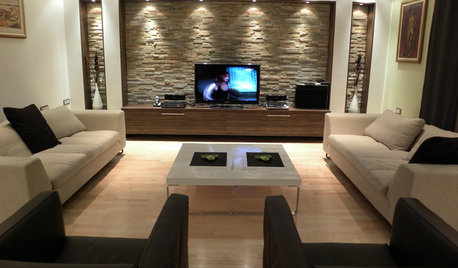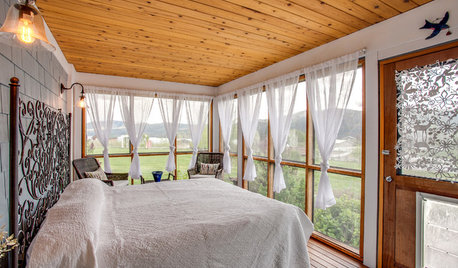Anybody have geothermal heat/AC?
ginam_oh
18 years ago
Related Stories

FLOORSIs Radiant Heating or Cooling Right for You?
Questions to ask before you go for one of these temperature systems in your floors or walls (yes, walls)
Full Story
GREAT HOME PROJECTSHow to Add a Radiant Heat System
Enjoy comfy, consistent temperatures and maybe even energy savings with hydronic heating and cooling
Full Story
BATHROOM DESIGNWarm Up Your Bathroom With Heated Floors
If your bathroom floor is leaving you cold, try warming up to an electric heating system
Full Story
HOUSEKEEPING5 Steps to Improve Your Heating System Now
Increase your heater's efficiency and safety for lower energy bills and greater peace of mind this winter
Full Story
MORE ROOMSBeat the Heat: Escape to the Basement
When It's Too Hot or Rainy, Bring the Party Downstairs
Full Story
LIFE6 Ways to Cool Off Without Air Conditioning
These methods can reduce temperatures in the home and save on energy bills
Full Story
MOST POPULAR5 Ways to Hide That Big Air Conditioner in Your Yard
Don’t sweat that boxy A/C unit. Here’s how to place it out of sight and out of mind
Full Story
GARDENING AND LANDSCAPING11 Ways to Make Your Sleeping Porch Even Better
Turn off that air conditioner and tune in to the delights of slumbering in the nighttime breeze
Full Story
GREEN BUILDINGThe Big Freeze: Inventors Break New Ground to Keep Things Cool
Old-fashioned fridges can be energy guzzlers, but there are more eco-friendly ways of keeping food fresh, as these global innovations show
Full Story
KITCHEN APPLIANCESFind the Right Cooktop for Your Kitchen
For a kitchen setup with sizzle, deciding between gas and electric is only the first hurdle. This guide can help
Full Story







gina_in_fl
Hairy_old_man
Related Professionals
El Sobrante Kitchen & Bathroom Designers · Kalamazoo Kitchen & Bathroom Designers · Lafayette Kitchen & Bathroom Designers · Montrose Kitchen & Bathroom Designers · Piedmont Kitchen & Bathroom Designers · Fairland Kitchen & Bathroom Remodelers · Glen Allen Kitchen & Bathroom Remodelers · New Port Richey East Kitchen & Bathroom Remodelers · Rancho Cordova Kitchen & Bathroom Remodelers · Red Bank Kitchen & Bathroom Remodelers · Palestine Kitchen & Bathroom Remodelers · Doctor Phillips Architects & Building Designers · Euless Architects & Building Designers · Los Alamitos Architects & Building Designers · Spring Valley Architects & Building Designershustonnj1
newenglandbuilder
pyropaul
dally099
woodchuckcanuck_com